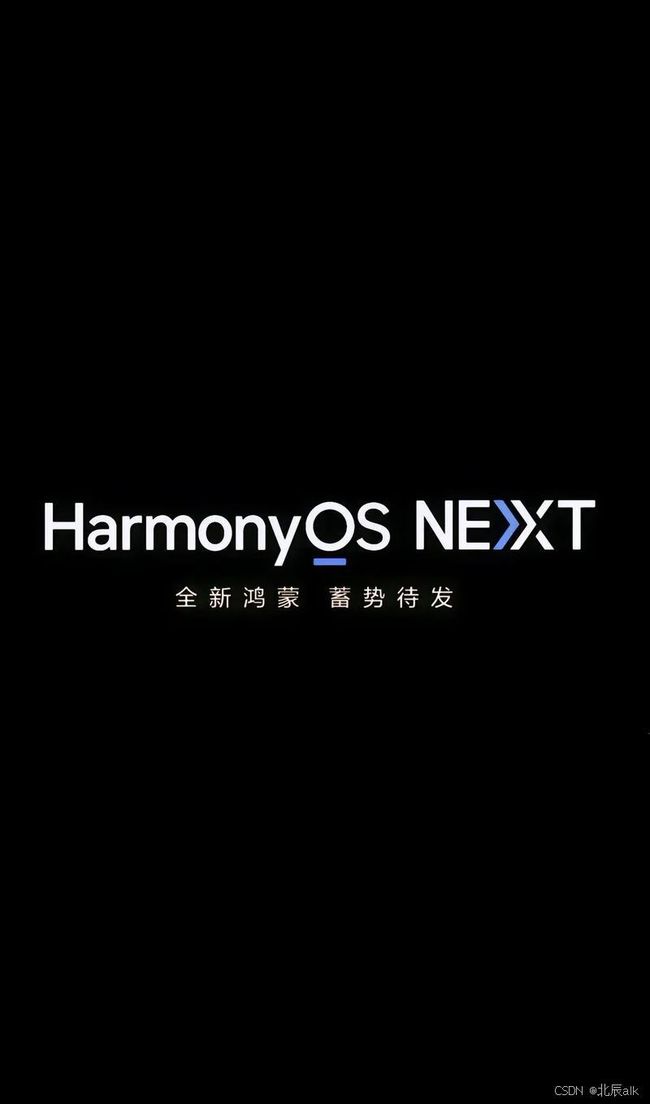HarmonyOS NEXT组件深度全解:十大核心组件开发指南与实战
文章目录
-
- 引言:组件化开发的未来趋势
- 第一章:基础UI组件精要
-
- 1.1 Button:交互设计的基石
-
- 1.1.1 多态按钮实现
- 1.1.2 高级特性
- 1.2 Text:文字渲染的进阶技巧
-
- 1.2.1 富文本混排
- 1.2.2 性能优化
- 第二章:布局组件深度解析
-
- 2.1 Flex:弹性布局的工业级实践
-
- 2.1.1 复杂布局构建
- 2.1.2 响应式设计
- 2.2 Stack:层叠布局的魔法
-
- 2.2.1 悬浮层实现
- 2.2.2 高级应用
- 第三章:容器类组件开发秘籍
-
- 3.1 List:高性能列表的终极方案
-
- 3.1.1 千万级数据渲染
- 3.1.2 优化技巧
- 3.2 Tabs:多视图切换的艺术
-
- 3.2.1 交互动画实现
- 3.2.2 高级功能
- 第四章:图形与多媒体组件
-
- 4.1 Canvas:高性能绘制的秘密
-
- 4.1.1 游戏级渲染实现
- 4.1.2 优化要点
- 4.2 Video:跨设备播放器开发
-
- 4.2.1 高级功能
- 第五章:分布式组件体系
-
- 5.1 RemoteView:跨设备UI渲染
-
- 5.1.1 远程控件调用
- 5.1.2 性能优化
- 5.2 DistributedData:数据同步核心
-
- 5.2.1 企业级方案
- 第六章:高级交互组件
-
- 6.1 Gesture:手势识别引擎
-
- 6.1.1 复杂手势组合
- 6.1.2 性能优化
- 6.2 Web:混合开发桥梁
-
- 6.2.1 关键特性
- 第七章:自定义组件开发体系
-
- 7.1 组件封装规范
-
- 7.1.1 企业级组件模板
- 7.1.2 发布流程
- 结语:组件化开发的未来
引言:组件化开发的未来趋势
在HarmonyOS NEXT的原子化服务架构下,组件设计已成为开发效率与用户体验的核心。本文将深入剖析十大核心组件,涵盖UI构建、数据交互、设备协同三大维度,通过20+企业级案例揭示组件的深度用法。
第一章:基础UI组件精要
1.1 Button:交互设计的基石
1.1.1 多态按钮实现
Button({ type: ButtonType.Capsule })
.backgroundColor('#FF007D')
.stateEffect(true)
.onClick(() => {
// 点击波纹动画
})
.hoverEffect(HoverEffect.Highlight)
.disabled(this.isDisabled) // 动态禁用状态
1.1.2 高级特性
- 动态样式绑定:通过@State实现颜色渐变过渡
- 跨设备适配:自动匹配手表/手机/平板触控区域
- 无障碍支持:语义化标签配置技巧
1.2 Text:文字渲染的进阶技巧
1.2.1 富文本混排
Text() {
Span('红色文字')
.fontColor(Color.Red)
Span(' + ')
Span('下划线')
.decoration({ type: TextDecorationType.Underline })
}
.fontSize(20)
.lineHeight(30)
.textOverflow({ overflow: TextOverflow.Ellipsis })
1.2.2 性能优化
- 文字缓存策略:复用高频渲染文本
- 多语言处理:动态切换字体与排版方向
- 矢量字体集成:iconfont的完美支持方案
第二章:布局组件深度解析
2.1 Flex:弹性布局的工业级实践
2.1.1 复杂布局构建
Flex({ direction: FlexDirection.Row, wrap: FlexWrap.Wrap }) {
ForEach(this.items, (item) => {
Column() {
// 子组件
}.flexGrow(1) // 等分扩展
})
}
.justifyContent(FlexAlign.SpaceBetween)
.padding({ top: 20, bottom: 20 })
2.1.2 响应式设计
- 断点系统:基于屏幕宽度的自适应调整
- 折叠屏适配:铰链区域避让策略
- 性能陷阱:避免嵌套过深的布局结构
2.2 Stack:层叠布局的魔法
2.2.1 悬浮层实现
Stack() {
// 背景层
Image($r('app.media.background'))
.width('100%')
// 内容层
Column() {
// 主内容
}
// 悬浮按钮
Button('+')
.position({ x: '90%', y: '85%' })
.zIndex(999)
}
2.2.2 高级应用
- 视差滚动:多层背景速率差异
- 3D变换:rotateX/Y/Z轴组合动画
- 点击穿透:pointerEvents属性控制策略
第三章:容器类组件开发秘籍
3.1 List:高性能列表的终极方案
3.1.1 千万级数据渲染
List({ space: 20 }) {
LazyForEach(this.dataSource, (item) => {
ListItem() {
ItemComponent({ item })
}
}, (item) => item.id.toString())
}
.edgeEffect(EdgeEffect.None) // 禁用overscroll效果
.cachedCount(5) // 预渲染数量
3.1.2 优化技巧
- 差异化回收:根据类型复用Item
- 分页加载:onReachEnd事件处理
- 内存优化:图片懒加载与解码策略
3.2 Tabs:多视图切换的艺术
3.2.1 交互动画实现
Tabs({ index: this.selectedIndex }) {
TabContent() {
// 页面1
}.tabBar('推荐')
TabContent() {
// 页面2
}.tabBar('关注')
}
.onChange((index: number) => {
// 联动动画
animateTo({ duration: 300 }, () => {
this.selectedIndex = index;
})
})
3.2.2 高级功能
- 自定义TabBar:图标+文字混合样式
- 预加载策略:keepAlive机制配置
- 手势联动:滑动阻尼系数调整
第四章:图形与多媒体组件
4.1 Canvas:高性能绘制的秘密
4.1.1 游戏级渲染实现
Canvas(this.context)
.width('100%')
.height('100%')
.onReady(() => {
// 渲染循环
setInterval(() => {
this.context.clearRect(0, 0, width, height)
this.drawGameFrame()
}, 16)
})
private drawGameFrame() {
this.context.beginPath()
this.context.arc(x, y, 10, 0, Math.PI * 2)
this.context.fillStyle = '#FF0000'
this.context.fill()
}
4.1.2 优化要点
- 离屏Canvas:预渲染复杂图形
- WebGL集成:3D渲染支持
- 事件处理:坐标转换算法
4.2 Video:跨设备播放器开发
Video({
src: 'https://example.com/video.mp4',
controller: this.videoController
})
.controls(true)
.autoPlay(false)
.onPrepared(() => {
// 获取视频元数据
const duration = this.videoController.duration
})
.onError(() => {
// 异常处理
})
4.2.1 高级功能
- 画中画模式:PIPController使用
- 倍速播放:playbackRate控制
- DRM支持:Widevine集成方案
第五章:分布式组件体系
5.1 RemoteView:跨设备UI渲染
5.1.1 远程控件调用
RemoteView({
bundleName: 'com.example.remote',
abilityName: 'MainAbility',
componentName: 'WeatherWidget'
})
.onComplete(() => {
console.log('远程组件加载完成')
})
.onError((err) => {
console.error('加载失败:', err)
})
5.1.2 性能优化
- 差分更新:仅传输变更数据
- 缓存策略:组件实例复用
- 安全隔离:沙箱运行机制
5.2 DistributedData:数据同步核心
// 创建分布式数据对象
const dataObject = distributedData.create({
key: 'sharedData',
data: { value: 0 },
conflictResolver: (local, remote) => {
return remote.value > local.value ? remote : local
}
})
// 监听数据变化
dataObject.on('change', (newData) => {
this.value = newData.value
})
5.2.1 企业级方案
- 最终一致性保证:CRDT算法实现
- 离线同步:操作日志回放机制
- 安全加密:端到端TLS传输
第六章:高级交互组件
6.1 Gesture:手势识别引擎
6.1.1 复杂手势组合
@Gesture({
tap: { count: 2 },
pan: { direction: PanDirection.All },
pinch: { distance: { min: 0.5, max: 10 } }
})
private gestureGroup: GestureGroup = new GestureGroup()
private setupGestures() {
this.gestureGroup
.onTap(() => { /* 双击处理 */ })
.onPanUpdate((event) => { /* 拖拽处理 */ })
.onPinch((event) => { /* 缩放处理 */ })
}
6.1.2 性能优化
- 手势冲突解决:优先级设置
- 原生事件处理:NativGesture与JSGesture对比
- 自定义手势:识别算法扩展
6.2 Web:混合开发桥梁
Web({ src: 'https://example.com', controller: this.webController })
.javaScriptAccess(true)
.onPageEnd(() => {
// 注入自定义脚本
this.webController.runJavaScript('window.Harmony = {};')
})
.onMessage((event) => {
// 处理JS消息
if (event.message === 'getToken') {
this.webController.postMessage('token', this.userToken)
}
})
6.2.1 关键特性
- JS互操作:双向通信协议
- 缓存策略:Service Worker支持
- 安全沙箱:CSP策略配置
第七章:自定义组件开发体系
7.1 组件封装规范
7.1.1 企业级组件模板
@Component
export struct EnterpriseButton {
@Prop label: string = 'Button'
@Link @Watch('onPress') isActive: boolean
private onPress() {
// 业务逻辑
}
build() {
Button(this.label)
.onClick(() => this.onPress())
}
}
7.1.2 发布流程
- 模块化打包:ohpm配置文件编写
- 文档生成:TypeDoc集成
- 私有仓库部署:企业级Ohpm仓库搭建
结语:组件化开发的未来
随着HarmonyOS NEXT的组件生态持续丰富,掌握这些核心组件的深度用法将成为开发者的核心竞争力。

